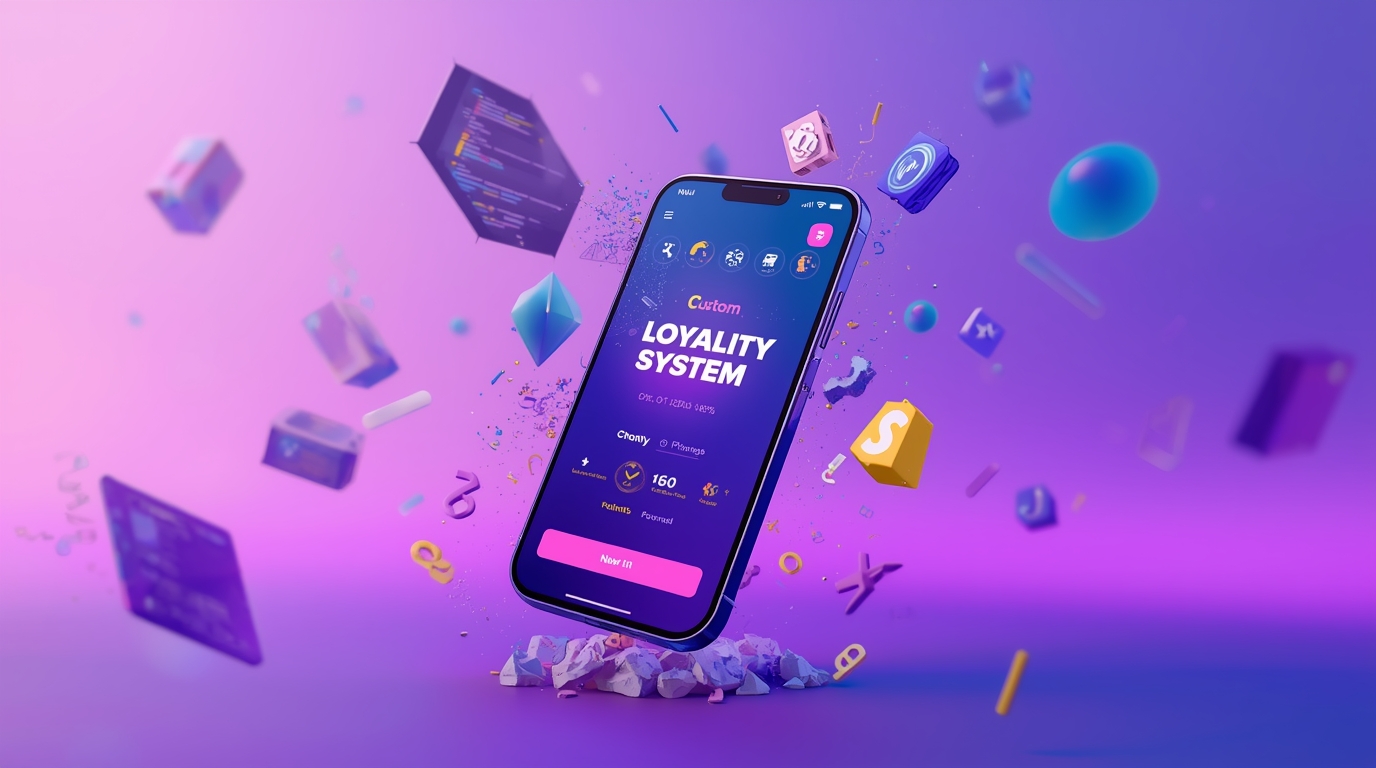Imagine a world where your favorite video games come to life around you, blending seamlessly with the real world. This magic happens through the partnership of two exciting technologies: Augmented Reality (AR) and Wearable Devices. For game developers, this partnership holds the key to creating extraordinary and immersive gaming experiences that players will cherish. In this article, we’ll explore the essence of augmented reality, define wearable devices, and delve into the exciting synergy between AR and wearables that’s changing the way we play.
What Is Augmented Reality?
Augmented Reality technology, or AR for short, is like a wizard’s spell that brings digital wonders into the real world. Unlike Virtual Reality (VR), where you’re completely transported to a digital world, AR adds computer-generated elements to your actual surroundings. Think of it as a magic lens that lets you see fantasy creatures, treasures, and challenges right where you are, making your world a canvas for gaming adventures.
Wearable gaming means putting gaming fun right into wearable gadgets like smartwatches, AR glasses, fitness trackers, and VR headsets. It lets you play without holding controllers or keyboards. Instead, you can use your body and surroundings to play.
What are Augmented Reality Games?
Now, this AR stuff is being used a lot in games. And not just any games, but the ones gamers play on computers, consoles, or smartphones. People are getting really interested in wearing special gadgets like glasses or watches while playing games. These gadgets can make the game even more awesome by adding things to the real world around you.
So, our article is all about how this AR thing is teaming up with these cool gadgets. We want to show game makers how to use AR wearables to make games super exciting. Imagine wearing special glasses and seeing dragons flying around your room as you battle them on your screen.
The Wearable Technology Market is getting bigger. It’s like the amount of money spent on these gadgets. Right now, it’s about 186.48 billion dollars, but it’s expected to reach 419.44 billion dollars by 2028. That’s a big jump! The place where it’s growing the fastest is Asia Pacific, and the biggest market is North America.

The Exciting Synergy
Now, picture this: you’re wearing a pair of stylish augmented reality glasses. As you walk down the street, you spot a virtual treasure chest on the sidewalk. With a simple gesture, you reach out and open it, revealing in-game rewards. This is where AR and wearable devices shake hands to create something amazing.
1. Immersion Redefined
Wearables take AR to the next level by wrapping it around players. Your smart glasses or headset become windows to this augmented world. Every turn of your head, every glance, becomes a way to explore the game. It’s like stepping inside the story, where the lines between the real and virtual blur.
2. Hands-Free Magic
No more fumbling with controllers or keyboards. Wearables free up your hands, turning your body into the controller. Imagine casting spells with a wave of your hand or dodging virtual obstacles by actually moving. It feels like magic, but it’s all thanks to the marriage of AR and wearables.
3. Richer Interactions
Wearable devices are equipped with sensors that can detect your movements, location, and even heart rate. This data opens the door to endless creative possibilities. Your game can react to your emotions, adjust to your surroundings, and tailor challenges to your fitness level. This makes every gaming experience a unique adventure.
4. Social Play Reinvented
AR and wearables also redefine how we play together. Imagine teaming up with friends in the park, each wearing their AR gear. You could have epic battles, solve puzzles, or collaborate to build virtual worlds that interact with your real environment. It’s a whole new level of multiplayer fun.
The Evolution of Augmented Reality (AR) in Gaming
The story of AR in gaming started with small experiments that laid the foundation for what was to come. In the late 20th century, curious minds began tinkering with combining virtual elements and the real world. One of the early milestones was the “Virtual Boy” by Nintendo in the 1990s. Although not exactly AR, it hinted at the possibilities of merging digital experiences with the real environment.
Landmark Games and Moments
As technology marched forward, landmark games and moments emerged that showcased the true potential of AR in gaming. One of these iconic moments was the release of “Pokémon GO” in 2016. Suddenly, players were capturing virtual creatures in real-world locations using their smartphones. This game introduced millions of people to the concept of AR, blurring the lines between reality and the gaming universe.
Another notable example is “Minecraft Earth,” which allowed players to build and explore blocky creations in their own neighborhoods through AR. This game demonstrated how AR could turn ordinary settings into extraordinary playgrounds for gamers.
Advancements in Recent Years
Recent years have witnessed remarkable advancements in augmented reality games, pushing the boundaries of what’s possible in gaming. The introduction of AR glasses and headsets, such as Microsoft’s HoloLens and Apple’s ARKit, has taken immersion to a whole new level. Now, players can interact with virtual objects and characters as if they exist in their own space.
Key Players in the AR Gaming Industry
The evolution of AR gaming wouldn’t have been possible without the contributions of key players in the industry. Companies like Niantic, the creators of “Pokémon GO,” have been pioneers in popularizing AR gaming. Their innovative approach paved the way for others to follow suit.
Tech giants like Google, Microsoft, and Apple have also played a crucial role. Google’s early project “Glass” and Microsoft’s HoloLens have demonstrated the potential of AR glasses, while Apple’s ARKit has empowered developers to create captivating AR experiences on iOS devices.
Immersion Redefined: How AR-Wearables are Transforming Gaming
Gaming has come a long way from simple pixels on screens. With the advent of augmented reality (AR) and wearable devices, a new era of immersive gameplay has dawned.
Types of AR-Enabled Wearable Devices
AR-enabled wearable devices come in various shapes and sizes, each bringing a unique twist to gaming immersion:
1. AR Glasses: How do AR glasses work? These futuristic glasses allow players to see both the real world and virtual elements at the same time. Games can overlay digital characters, objects, and environments onto the player’s surroundings, creating a truly interactive experience.
2. Smartwatches: These wrist companions might seem small, but they’re capable of enhancing gaming too. They can display game-related information, stats, and even notifications, all without interrupting gameplay.
3. Fitness Trackers: Believe it or not, fitness trackers can add a layer of excitement to gaming. By monitoring the player’s movements and biometrics, games can adapt and respond based on real-world activity.
4. VR Headsets with AR: Virtual reality headsets with AR capabilities combine the best of both worlds. AR headsets create immersive virtual environments while also blending in digital elements with the real world.

Enhancing Immersion with AR
AR technology takes gaming immersion to new heights by seamlessly merging the virtual and physical worlds:
1. Overlaying Virtual Elements: AR overlays computer-generated images onto what you see in real life. In gaming, this means that your living room could transform into a battlefield, or a friendly virtual character could interact with you as if they were in your world.
2. Natural Interactions: Instead of using traditional controllers, AR-wearables encourage players to use gestures, voice commands, and body movements to interact with the game. This makes the gameplay feel more natural and engaging.
Popular AR-Enabled Games
The market has seen the rise of numerous AR-enabled games that have captured players’ imaginations:
| Game Title | Description |
| Pokémon GO | This hit game brought the world of Pokémon to our streets. Players explore the real world to find and catch virtual creatures. The game’s success sparked widespread interest in AR gaming. |
| Minecraft Earth | A beloved game reimagined in AR. Players can build and explore their creations in the real world using their smartphones. |
| Harry Potter: Wizards Unite | Set in the wizarding world, this game lets players cast spells and solve mysteries in an augmented reality version of the Harry Potter universe. |
Challenges and Innovations in AR-Wearable Gaming

When it comes to playing games, we all love a bit of excitement and adventure. And now, things are getting even more thrilling with the combination of Augmented Reality (AR) and wearable devices. But hey, it’s not all smooth sailing. There are challenges that game developers need to tackle to make this awesome combo work seamlessly. Let’s dive into the world of AR-wearable gaming and explore the challenges and innovations that come with it.
Creating Seamless AR Experiences: The Technical Hurdles
Imagine wearing special glasses and seeing your favorite game characters right in front of you. That’s AR magic! But making this magic happen on wearable tech isn’t as easy as waving a wand. There are some tricky technical challenges to overcome:
– Processing Power: AR needs a lot of brainpower from the device. It has to mix the real world with virtual stuff in real-time. Wearable gadgets, like your smartwatch, aren’t always as powerful as big computers. So, getting all this work done smoothly can be tough.
– Optics: This is like giving your wearable gadget a pair of eyes. The optics need to be top-notch, so the virtual things you see blend perfectly with the real world. It’s like making sure a dragon in your room looks like it’s really there, not just a blurry image.
– Tracking: The gadget needs to know where you are and how you’re moving. If it’s off even a little bit, the AR experience can become wobbly and weird. It’s like trying to dance with someone who’s not following your moves.
Innovations that Make AR-Wearable Gaming Awesome
Game developers are like magicians. They’re constantly inventing new tricks to make AR-wearable gaming even cooler:
– Improved Optics: Remember those optics? Well, they’re getting better and better. Developers are creating lenses that make the virtual stuff blend in so well, you might forget it’s not real.
– Gesture Recognition: Ever imagined controlling a game by just waving your hand? That’s where gesture recognition comes in. Wearables are learning to understand your movements, making the gaming experience more interactive.
– Haptic Feedback: This is like adding a sense of touch to your gaming. When you feel a vibration or a gentle tap on your wrist, it’s the game saying, “Hey, something exciting happening!” It’s like getting a secret message from the game world.
Comfort, Battery Life, and Design: Meeting User Expectations
AR-wearable gaming is all about fun, but it won’t be enjoyable if the gadget is uncomfortable to wear, dies out quickly, or confuses you with its buttons. Here’s what developers are working on to make things better:
– Comfort: Imagine wearing something heavy or tight on your head for hours. Not so fun, right? Developers are finding ways to make wearables light, comfy, and easy to wear for longer gaming sessions.
– Battery Life: Nobody likes their game to suddenly shut down because the battery’s empty. Game developers are trying to make wearables that can last through your gaming adventures without needing a recharge every few minutes.
– User Interface Design: Think of this as the map of your game world. It’s how you interact with the game. Developers are working hard to make sure the buttons and controls on wearables are easy to understand and use, so you don’t get lost in the middle of a game.
Real-World Fun with AR-Wearables: Changing Social Gaming!
Ready to dive into the exciting world of AR-wearables and how they’re shaking up social gaming? So, what is social gaming?
Social gaming is a type of video game that focuses on playing and interacting with other people. It’s about connecting with friends and other players to have fun together. Here’s a list of key points about social gaming:
- Multiplayer Interaction: Social games allow players to team up, compete, or cooperate with each other in a virtual world.
- Online Connectivity: These games are often played over the internet, connecting players from different locations.
- Cooperative Challenges: Players work together to achieve goals, solve problems, or complete missions as a team.
- Competitive Play: Social casino games can also involve friendly competition, where players compete against each other to achieve higher scores or win challenges.
- In-Game Communication: Communication tools like chat, voice chat, and emotes allow players to talk and express themselves while playing.
- Friendship Building: Social games often encourage players to add friends, create social circles, and build communities within the game.
- Virtual Goods Sharing: Players can sometimes exchange virtual items, gifts, or in-game currency with each other.
- Social Platforms: Many social games are integrated with social media platforms, making it easy to invite friends and share achievements.
Virtual Treasure Hunt with Friends
Imagine this: you and your friends are wearing AR glasses, and suddenly, your local park transforms into a virtual treasure hunt! That’s exactly what happened with the “Treasure Trek” game. Players wear AR glasses and follow clues in the real world to find virtual treasures. It’s like a modern-day pirate adventure where you and your friends team up to explore and discover hidden gems. This kind of game turns social gaming into an outdoor escapade!
Becoming Superheroes Together
Have you heard of “Hero Unity”? It’s a game that lets you and your buddies put on AR-wearables and become superheroes, all while hanging out in your living rooms. The glasses turn your surroundings into a city under attack by aliens, and you and your friends must work together to save the day. It’s not just about playing; it’s about feeling like you’re in a superhero movie with your pals!
Case Study: The Growth of AR-Enhanced Board Games
Remember classic board games? Well, AR-wearables are giving them a futuristic twist. Games like “AR Monopoly” and “AR Scrabble” are using these gadgets to make traditional games come to life. Imagine watching your Monopoly properties rise from the board and form towering skyscrapers right before your eyes! These AR-enhanced board games are making social gaming evenings more interactive and engaging.
Impact of AR-Wearables on Social Gaming
| Impact | Description |
| Enhanced Interaction | AR-wearables let players interact with virtual elements in the real world, making games immersive. |
| Shared Adventures | Friends team up in real settings for virtual adventures, making social gaming a group experience. |
| Creative Social Play | Players use gestures and movements to control AR games, encouraging physical and imaginative play. |
| Modernizing Traditions | AR-enhanced board games give classic games a modern twist, attracting a new generation of players. |
Beyond Gaming: AR-Wearables Changing Education and Training
Augmented Reality (AR) and wearables aren’t just for fun and games anymore. They’re changing the way we learn and get better at things. Let’s dive into how these amazing gadgets are being used in education and training, and how they’re making a big difference.
Learning in a New Way
Have you ever thought about learning with special glasses or watches? Well, now it’s happening! AR-wearables let us see information right in front of us, like having a teacher inside our glasses. Imagine reading a history book, and suddenly, historical figures come to life and explain things to you. That’s the magic of AR-wearables.
Getting Skilled with AR
When it comes to getting good at something, practice is key. AR-wearables take this to a whole new level. Imagine you’re learning to fix cars. Instead of just reading about it, you put on AR glasses, and they show you step-by-step how to do it. It’s like having a skilled instructor right there with you.
Real-Life Experiences, Virtually
Ever heard of pilots or surgeons practicing in simulations? AR-wearables make these simulations even cooler. Imagine being a pilot trainee and putting on AR glasses that make you feel like you’re flying a real plane, even though you’re still on the ground. This helps people get really good at their jobs without any real risks.
Changing Industries
AR-wearables aren’t just limited to classrooms. They’re shaking up all kinds of industries. In healthcare, doctors can practice surgeries without actual patients. In factories, workers can learn how to use machines safely. Even astronauts can train for space missions with AR-wearables.
So, even though game developers are our main audience, there’s a whole world of opportunities beyond games. AR-wearables are shaping education and training, making learning more fun, interactive, and effective. It’s time to explore the endless possibilities of this technology and change the way we learn and work for the better.
Final Thoughts on Wearable Gaming
AR-wearables are top-tier tools. They help us learn in new ways, practice skills better, and feel like we’re in different places. They’re not just for fun and games, but they’re changing how we become smarter and better at things. From history lessons that come to life to practicing surgeries without real patients, AR-wearables are making learning super cool. So, while game developers are important, these gadgets are also showing us a whole new world of learning and working that’s exciting and full of possibilities!





